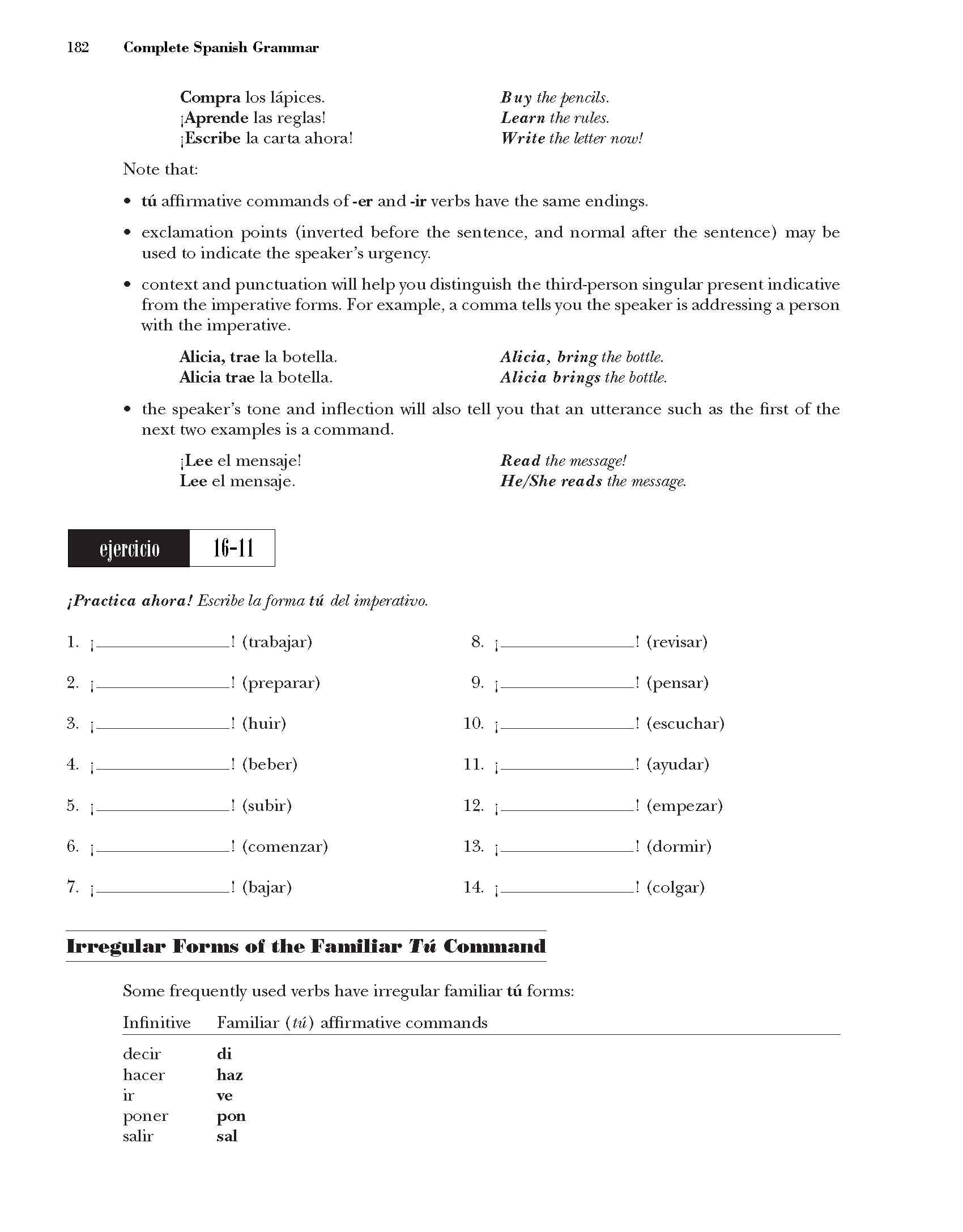CSG193

182 Complete Spanish Grammar
Compra los lapices. Buy thepencils.
jAprende las reglas! Learn therules.
jEscribe la car ta ahora! Write the letter now!
Notę that:
• tri affirmative commands of -er and -ir verbs have the same endings.
• exclamation points (inverted before the sentence, and normal after the sentence) may be used to indicate the speaker’s urgency.
• context and punctuation will help you distinguish the third-person singular present indicative from the imperative forms. For example, a comma tells you the speaker is addressing a person with the imperative.
Alicia, trae la botella. Alida, bring the bottle.
Alicia trae la botella. Alida bdngs the bottle.
• the speaker’s tonę and inflection will also tell you that an utterance such as the first of the next two examples is a command.
jLee el mensaje! Read the message!
Lee el mensaje. He/She reads the message.
ejercicio
jPractica ahora! Escńbe la forma tu del imperatwo.
! (revisar)
! (pensar)
! (escuchar) ! (ayudar)
! (empezar) ! (dormir)
! (colgar)
4. j_! (beber) 11. \
Irregular Forms of the Familiar Tu Conunand
Some frequently used verbs have irregular familiar tri forms: Infinitive Familiar (tu) affirmative commands
|
decir |
di |
|
hacer |
liaz |
|
ir |
ve |
|
poner |
pon |
|
salir |
sal |
Wyszukiwarka
Podobne podstrony:
CSG243 232 Complete Spanish Grammar 5. ^Compraste los refrescos? No, 6.
CSG187 176 Complete Spanish Grammar Guarden los libros ya. Pu t the books away imm
CSG187 176 Complete Spanish Grammar Guarden los libros ya. Pu t the books away imm
CSG249 238 Complete Spanish Grammar ejercicio Los infinitivos: las posibilidades. Sustituye el objęt
CSG257 246 Complete Spanish Grammar ejercicio En mi ciudad. Practica. Combina las dos frases en una
CSG293 282 Complete Spanish Grammarejercicio l Que clase de relación existe entre los elementos de l
CSG185 174 Complete Spanish Grammar 3. Yo comprarfa un equipo de sonido nuevo si (
więcej podobnych podstron